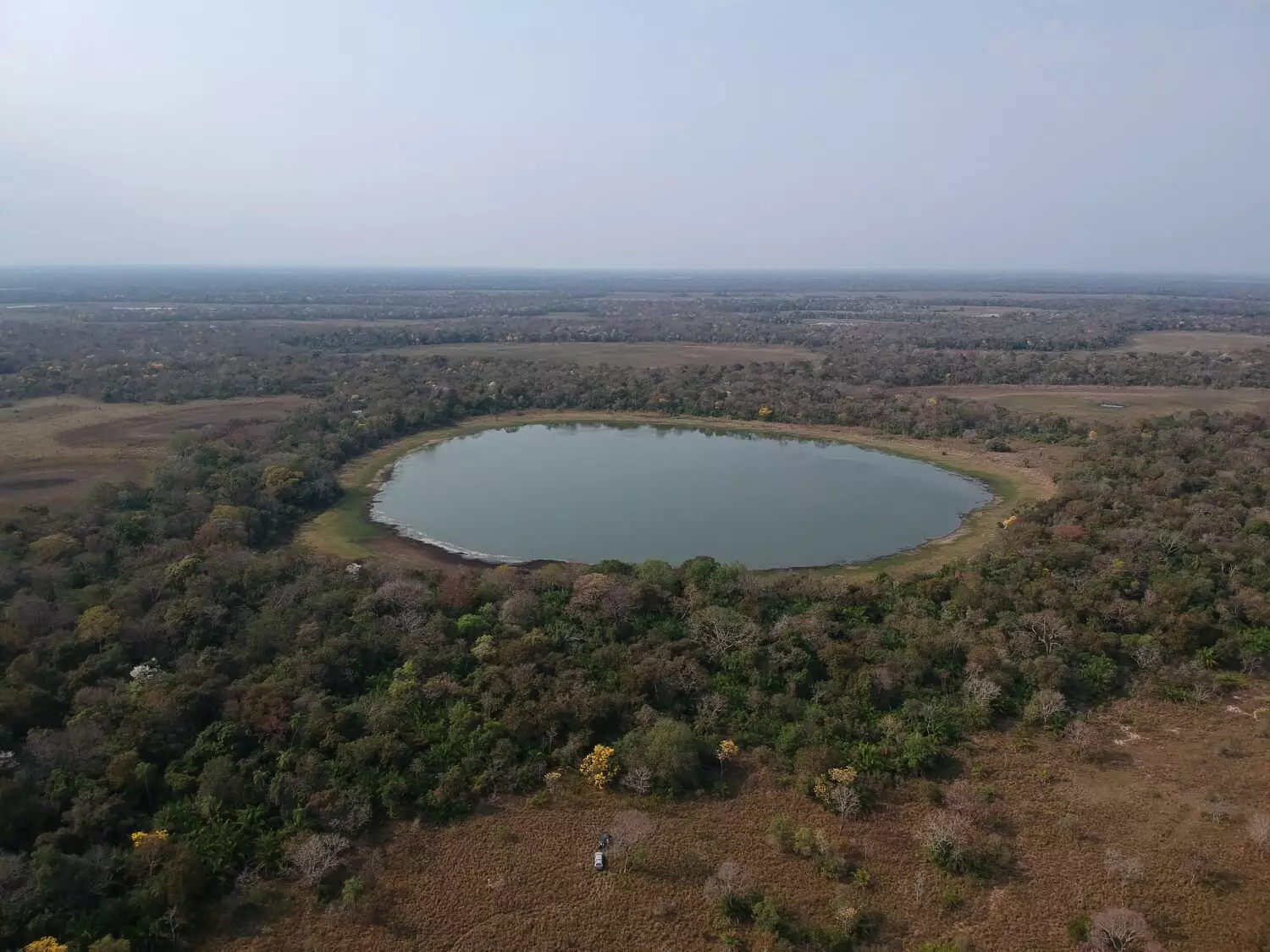The Pantanal, recognized as the largest tropical wetland globally, spans an impressive area of approximately 153,000 km². This expansive ecosystem, predominantly located in southwestern Brazil (77.41%), also extends into Bolivia (16.41%) and Paraguay (6.15%). The region’s distinct geological and climatic characteristics contribute to its ecological richness, hosting a wide variety of flora and fauna. Among the most intriguing features of the Pantanal are its soda lakes, which contribute to the complex interplay of greenhouse gas emissions, offering a unique environment for scientific inquiry.
While freshwater lakes are often the focus of ecological studies, soda lakes, especially in the Pantanal, are gaining attention due to their distinctive properties and lesser-known contributions to greenhouse gas emissions. Unlike freshwater lakes, soda lakes are usually shallow, highly alkaline, and characterized by high pH levels (sometimes reaching 11). This unique chemical composition influences not only the microbial communities that inhabit these lakes but also the entire ecosystem.
Seasonality plays a pivotal role in determining the biological processes occurring within the soda lakes, particularly through alternating dry and rainy spells. These fluctuations affect the nutrient levels in the lakes, which in turn influence the emissions of greenhouse gases, notably methane (CH4), carbon dioxide (CO2), and nitrous oxide (N2O). A recent study conducted by teams from the University of São Paulo and the Federal University of São Carlos sheds light on the biological mechanisms driving these emissions, emphasizing the urgent need for more extensive research in this area.
The study categorized the soda lakes into three distinct types based on their water chemistry and microbial communities: eutrophic turbid (ET), oligotrophic turbid (OT), and clear vegetated oligotrophic (CVO). The findings revealed significant variations in methane emissions among these lake types, with ET lakes being the highest emitters. The key driver behind this phenomenon appears to be cyanobacterial blooms and the decomposition of organic matter in these lakes, especially during the dry seasons.
Cyanobacteria, a form of photosynthetic microorganisms, have emerged as critical players in the biogeochemical processes of soda lakes. The study noted that ET lakes, with their rich populations of cyanobacteria, experienced increased methane production due to both the decomposition of these microbes and the organic carbon they produce during photosynthesis. Conversely, while CVO lakes also emitted some methane, OT lakes exhibited no methane emissions, likely attributed to elevated sulfate levels in their waters.
Understanding the role of these microbial communities is vital not only for elucidating the current emission patterns but also for predicting responses to future environmental changes. Researchers note that significant anthropogenic pressures—such as rising temperatures, altered precipitation patterns, and wildfires—pose threats to these delicate ecosystems, leading to shifts in microbial diversity and functionality.
Recent years have seen the Pantanal grappling with extreme droughts and wildfires, which have further intensified the conversation surrounding the ecology of soda lakes. Data indicate a concerning trend, with the number of wildfires escalating dramatically, peaking at over 22,000 in 2020 alone. By early 2024, this trend had shown no signs of abating, with fire occurrences surpassing those recorded in entirety for previous years.
Satellite imagery has provided compelling evidence of the degradation of these ecosystems, illustrating a remarkable shrinkage in water volume and corresponding increases in cyanobacterial populations from 2000 to 2022. This degradation raises alarm bells about not only the local biodiversity—which includes over 2,000 plant species and 580 bird species—but also the lakes’ contributions to greenhouse gas emissions in a changing climate.
Despite the wealth of findings, researchers acknowledge substantial gaps in knowledge regarding the total contribution of soda lake emissions to the Pantanal’s overall greenhouse gas profile. Current efforts focus on developing models that can quantify these emissions more accurately while also exploring the ongoing biogeochemical changes rapidly transforming these ecosystems.
As highlighted by lead author Thierry Alexandre Pellegrinetti, understanding the geological and biological intricacies of these lakes is essential for devising strategies to mitigate their environmental impact. Similarly, co-author Simone Raposo Cotta emphasizes the foundational role microorganisms play not only in nutrient cycling but also in maintaining the overall ecological balance within these systems.
Given the pressing threats posed by climate change and human activities, it is imperative for researchers, policymakers, and conservationists to come together and devise comprehensive strategies that prioritize the health and sustainability of the Pantanal’s soda lakes. Continued research is needed to enhance our understanding of these unique ecosystems and assess their contributions to global greenhouse gas emissions.
The soda lakes of the Pantanal offer a compelling case study in the complexities of environmental science and climate change. Through targeted research and conservation efforts, it may be possible to preserve these unique ecosystems and manage their responses to the challenges posed by a warming world.


Leave a Reply